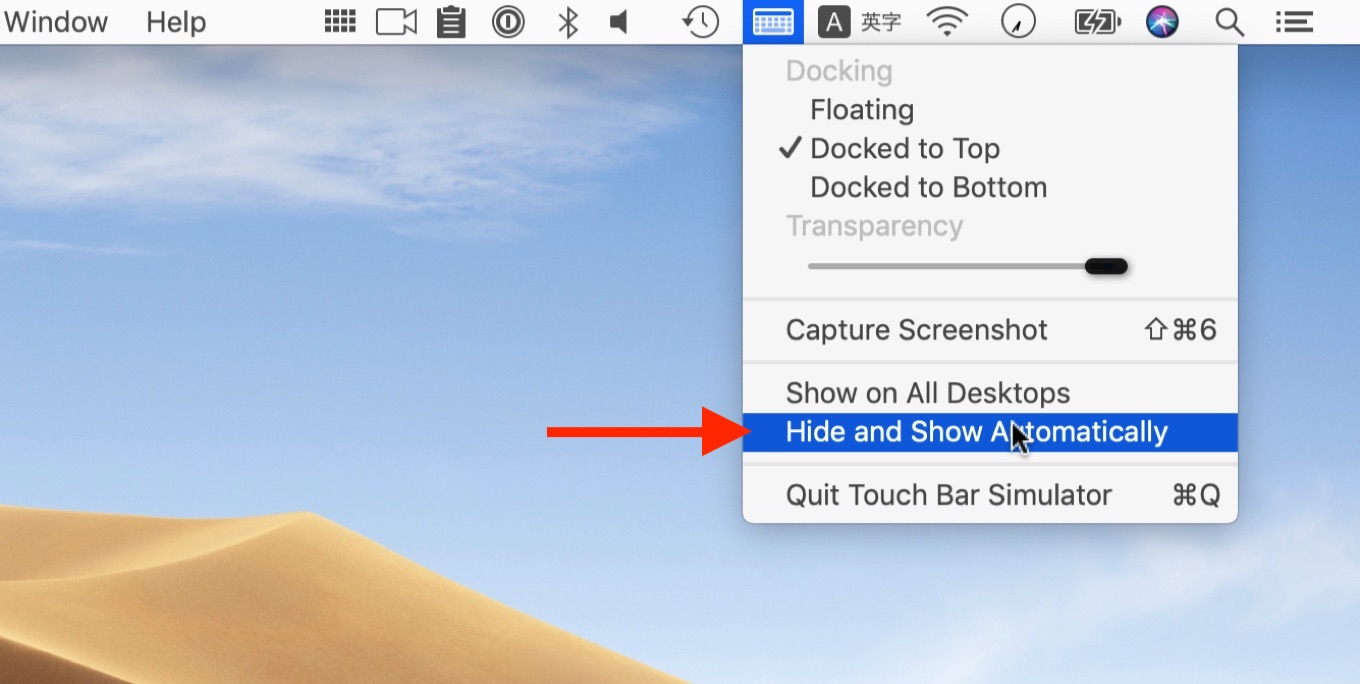
Changing the keyboard layout on your Mac will change the layout on the simulated device. The status bar is taller in its in-call state than in its normal state.Īutomatically selects the iOS keyboard that most closely matches the keyboard layout of your Mac. The in-call state bar is used when a phone call is in progress, a FaceTime call is in progress, or Maps in iOS 6 or later is navigating. This command shows how your app’s user interface looks when a user launches your app during a call or while navigation is running. Toggles the status bar between its normal state and its in-call state.
#XCODE TOUCH BAR SIMULATOR HOW TO#
Sends the frontmost app a simulated low-memory warning.įor information on how to handle low-memory situations, see Responding to Low-Memory Warnings in iOS. This functionality is deprecated in Xcode version 7.3 or later. Sets whether simulated touches are shallow or deep presses.
#XCODE TOUCH BAR SIMULATOR SIMULATOR#
Sets the simulator to use a Force Touch trackpad as input for 3D Touch on supported simulated devices.įor more information on 3D Touch, see Adopting 3D Touch on iPhone. Simulates a matching or nonmatching finger used on the Touch ID sensor. Table 3-1 Hardware menu items for iOS and watchOSĭisplays the Home screen of the simulated device. Each menu item shows if it works on a simulated iOS device or watchOS device, or both. Table 3-1 lists hardware manipulations you can perform in Simulator by using the Hardware menu. With Simulator, you can simulate most of the actions a user performs on a device. Simulating iOS and watchOS Hardware Interactions

For information on interacting with tvOS, see Interacting with tvOS. Uninstall an app you previously installed in a simulation environmentĬopy and paste text and images between the simulator and your Macįor information on ways of interacting that are common to all platforms, see Interacting with Simulator. Simulate Multi-Touch gestures using a mouse and keyboard Simulate hardware actions such as rotate, shake, and 3D Touch This chapter covers the ways of interacting with iOS and watchOS devices.

Simulator uses menu choices, the pointing device, and combinations of the two to simulate different interactions. Users interact with iOS and watchOS devices using touch. For Xcode 9 and later, see Simulator Help by choosing Help > Simulator Help in Simulator. The information in this document is deprecated in Xcode 9.


 0 kommentar(er)
0 kommentar(er)
